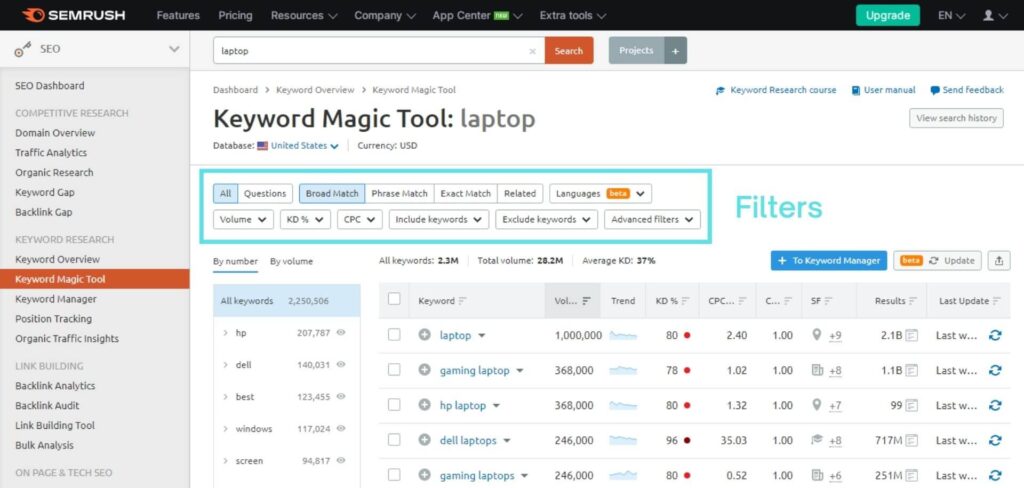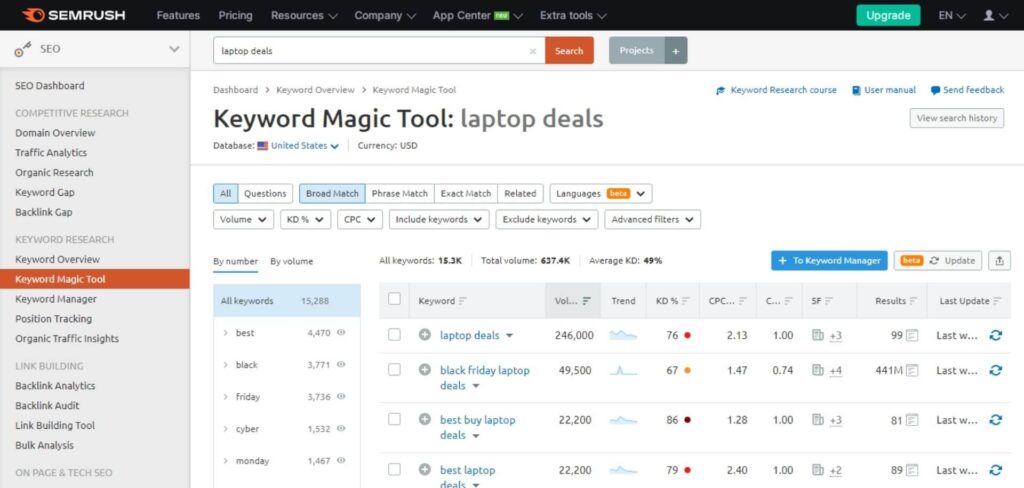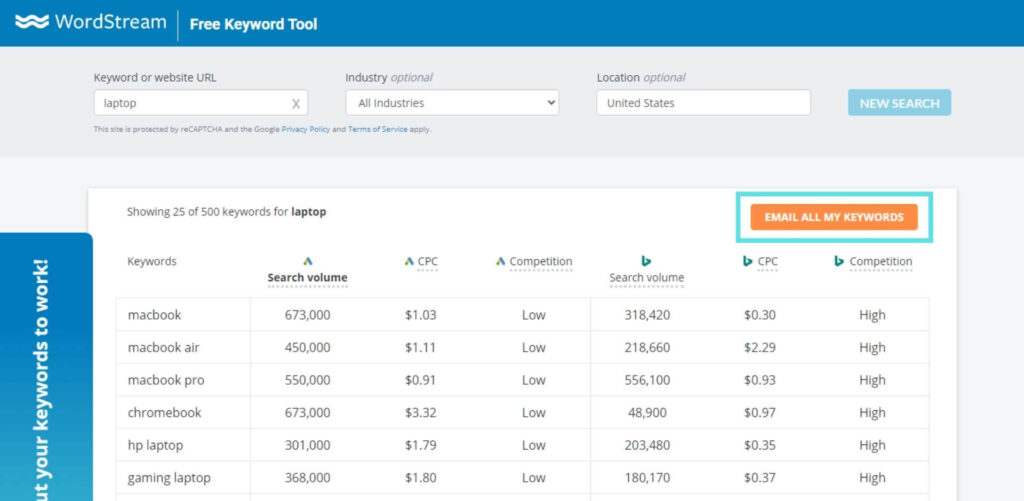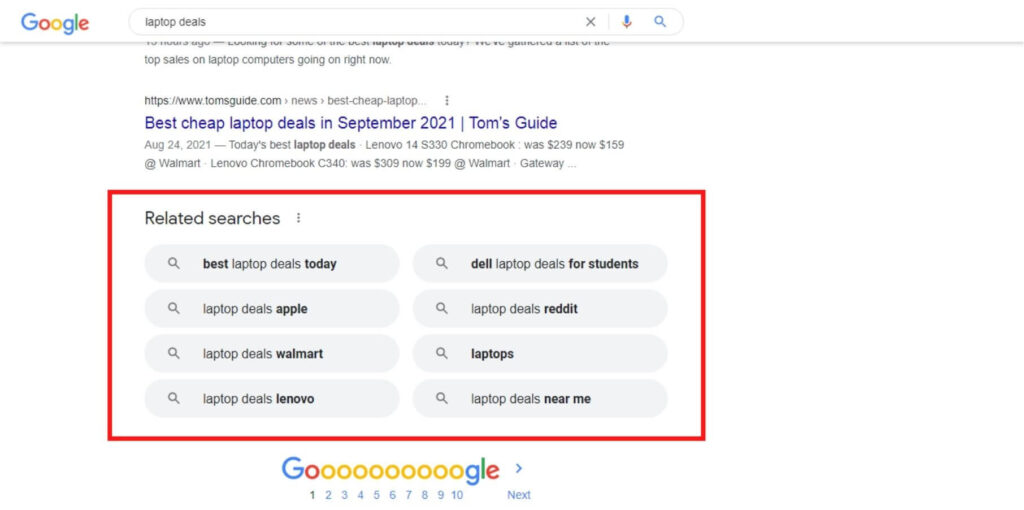What are long-tail keywords? How to find them?
-
Abdul Wadood
What are long-tail keywords?
Long-tail keywords are longer and more specific keyword phrases that usually have low search volume and competition.
Long-tail keywords are usually niche-specific keyword phrases, and they contain three to six words. By ranking your website for a long-tail keyword, you can get a targeted audience.
Here’s an example.
Say that you write a blog on the best laptop deals. In this case, it’s nearly impossible to make your blog rank high for the keyword “laptop” as there will be lots of competition. While, if you use longer and specific keywords like “best workstation laptop deals”, you can make your blog rank higher and get targeted readers.
Sounds interesting!!!
In this era, the use of voice search has increased. Here’s a stats from Google to back it up.

When people use voice search, they use a long-tail keyword as their search query because it is more conversational.
You can use long-tail keywords in your new blog post. Or, if your existing blog isn’t performing well, you can optimize it with long-tail keywords.
Do long-tail keywords help SEO?
Long-tail keywords have a better chance of generating organic traffic to your website than seed keywords or head keywords.
Moreover, it’s easier to rank for long-tail keywords in the Search Engine Results Page (SERP) than seed keywords — because of low competition.
But, wait. What’s a seed keyword?
Seed keywords are short — typically one or two words. They are otherwise known as head keywords or primary keywords. You may also consider seed keywords as short-tail keywords. For example, “laptop” is a seed keyword.
Ok.
Since the long-tail keywords can drive targeted traffic, the conversion rates will be higher as well.
Nice!
Besides organic SEO, long-tail keywords can help advertisers too. Since long-tail keywords have low competition, the CPC (Cost-per-click) will be lower. Also, the conversion rates will be higher because you can get a targeted audience with long-tail keywords.
The primary advantages of long-tail keywords are as follows.
- Low competition
- Higher conversion rates
- Higher organic traffic
- Lower CPC (for advertisers)
How to find long-tail keywords?
Finding long-tail keywords is pretty easy as there are several tools to help you with the process.
Below, I’ve listed the procedure to find long-tail keywords using various tools.
1. SEMRush Keyword Magic Tool
The Keyword Magic Tool from SEMRush is a popular and fantastic keyword research tool.
Here are the steps to find long-tail keywords using SEMRush Keyword Magic Tool.
Step #1: To start using this tool, you should first sign up.
Once done, enter the seed keyword in the search box and click “Search” to begin the keyword research process.

Step #2: Once you click the “Search” button, you will get a list of suggested and related keywords.
Step #3: Sort the keywords using the filters.

Step #4: You can manually type a new seed keyword in the search box to find more long-tail keywords.
For instance, I want more long-tail keywords related to “laptop deals”. So, I can type the keyword in the search box to see more suggestions (as shown in the image below).

Note: As SEMRush is a premium tool, there will be limitations when using the free version. If you want advanced features for in-depth keyword analysis, you can sign up for the premium plans of SEMRush.
2. WordStream
If you’re looking for a free tool to find long-tail keywords, WordStream can be a good option.
The following are the steps to find long-tail keywords using WordStream.
Step #1: Enter a seed keyword or website URL in the search box and click “Find My Keywords”.

You may also choose an industry and country to filter the results.
Step #2: Click on “Email All My Keywords” to receive up to 500 keyword suggestions that you can download as a spreadsheet.

Step #3: To find more specific long-tail keywords, you can further enter a keyword into the search box and get more keyword suggestions.
3. Google Search
You can use the Google search to find long-tail keywords.
Yes, you heard me right!
Here are the steps to do so.
Step #1: Go to Google Search.
Step #2: Type your topic of interest (seed keyword) in the Google search box. Google autocomplete will show you the suggestions, which you can note in a spreadsheet. These suggestions are usually long-tail keywords.

Step #3: Enter each keyword noted in the spreadsheet individually in Google search. Scroll down to the bottom of the Search Engine Results Page (SERP) and note the “Related searches” suggestions in the spreadsheet. These suggestions are also usually long-tail keywords.

Step #4: Now, using keyword research tools like SEMRush, Ubersuggest, Wordtracker, etc., gather information like search volume, competition, etc., of those long-tail keywords.
Step #5: Rinse and repeat the process till you find the set of keywords you desire.
Nice.
I hope you got an idea to find long-tail keywords. Besides the tools listed in this blog, you can also use Google Keyword Planner, Ahrefs Keyword Explorer, Ubersuggest, etc., to find long-tail keywords.
Conclusion
Long-tail keywords can help you achieve better SEO results because they are niche-specific with low search volume and SEO competition.
Finding long-tail keywords is pretty simple — thanks to the availability of a wide range of advanced SEO tools.
I personally recommend using WordStream or Google Keyword Planner to find long-tail keywords as they provide lots of suggestions for free.
However, in Google Keyword Planner, you should be advertising on Google to get the exact search volume of keywords. Also, the competition it displays for the keywords is applicable for PPC ads and not SEO. Nevertheless, you can use Google Keyword Planner to get long-tail keyword suggestions.
Once you find the long-tail keywords, you can use them in your new blog and expect higher rankings. Moreover, you can optimize your existing blogs that aren’t performing well with long-tail keywords.
If you have any doubts or need help to get started with long-tail keywords, do let me know in the comment section below.
